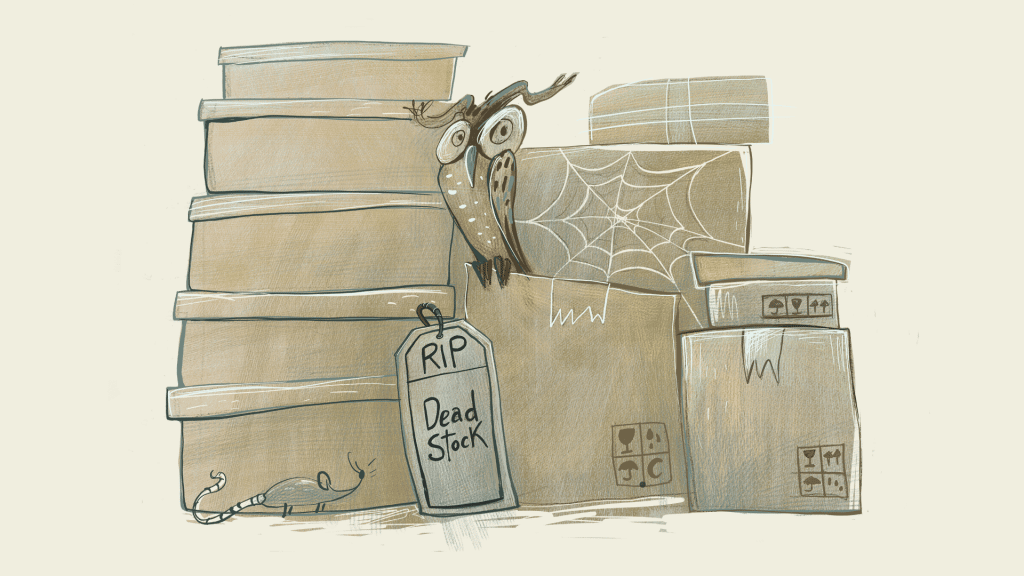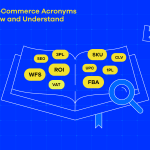
Spring is here! At home, this probably means spring cleaning time—breaking out the cleaning supplies and getting to work preparing for the new season. Unfortunately, this may not be the case at your warehouse. Across the globe, countless piles of merchandise collect dust in warehouses. It is dead stock. It’s been forgotten, and none will ever be purchased.
However, even if you plan to do an annual inventory spring cleaning, it’s not enough. Carrying dead stock, even for a little while, is a massive mistake that costs you money.
How Dead Stock Costs Sellers
Dead stock costs you in a variety of ways:
Manufacturing Costs
If you fabricate or in some way make the products you sell, you incur associated costs that you can’t recoup. The materials, supplies, shipping, and labor to produce these dead stock products have already been spent.
Purchasing Costs
If your ecommerce business purchases inventory to resell that becomes dead stock, you lose money on your investment. In most cases, you can’t return these products to your supplier or recoup your acquisition costs.
Shipping Costs
If you pay to ship merchandise to a 3PL (Third-Party Logistics) or fulfillment center, you won’t see a return on this investment if said merchandise becomes dead stock. Furthermore, depending on your 3PL partners, you may have to pay again to have this unsellable merchandise removed or shipped back to you.
Carrying Costs
Unlike the abovementioned dead stock costs, this is an area where you can cut your losses. Paying month after month to store inventory that won’t sell is something you can put an end to. If you know where this inventory is and how to remove it, you can prevent these unsellable products from becoming a perpetual drain on your resources.
A plan to proactively recognize and eliminate dead stock is an often overlooked way to cut costs and boost your bottom line. As an ecommerce seller, many factors affect your cost of goods sold (COGS) calculations. By reducing these costs, you increase your profit margins and pricing flexibility, potentially making you even more competitive in the marketplaces where you sell.
Given the stakes, eliminating the waste of space, time, and money caused by dead stock cannot be a once-in-a-while task; it must be an integral part of your overall warehouse management system (WMS) plan.
You Can’t Fix a Dead Stock Problem You Don’t See
One of the main reasons ecommerce businesses carry dead stock quarter after quarter is that they don’t realize the problem exists. Without a proper WMS like Skustack, it can be easy to lose track of unsellable products in your (or someone else’s) warehouse.
We sought to cure this issue when developing Skustack, our patented WMS platform. Among its cadre of features, Skustack includes a precise and accurate inventory tracking system that helps you know where all your inventory is at all times across all your warehousing locations. Skustack even allows you to pinpoint the location of a particular piece of merchandise down to the bin level.
This precision makes it possible to maintain accurate inventory records across your company. For added peace of mind, Skustack’s cycle counting feature allows you to conduct automated audits for all your stock, no matter which bins or warehouses pieces may be hiding in. Together, these features can help you identify where your dead stock is lurking and decide how to deal with it.

Know Your Fulfillment and 3PL Partners’ Dead Stock Policies
Many ecommerce sellers rely on outside help for inventory storage and warehousing needs. Whether Fulfillment By Amazon (FBA) or an arrangement with a 3PL provider, these partnerships can ease the burden of storing, picking, and shipping customer orders. That said, it can be challenging to identify and eliminate dead stockpiles when you can’t physically lay your hands on your products.
Skustack will undoubtedly help you to locate dead stock, but then what? Thankfully, most outside logistical services offer ways of handling dead, damaged, returned, or otherwise unwanted merchandise. If you know what and where the dead stock is, how much to remove, and how you want it handled (destruction or return shipping are common options), your fulfillment and 3PL partners should have a plan to help you.
The thing is, it’s not going to come cheap. Most providers charge fees for locating and removing your dead stock for you. This becomes yet another dead stock cost that you won’t be able to recoup. The best plan is to avoid the problem in the first place.
Make Identifying and Removing Dead Stock a Year-Round Priority
Any warehouse management plan needs regular inventory audits. Yet, ask any warehouse employee how they feel about hand-counting stock. Not only are they tedious, time-consuming, and costly, but they are seldom wholly accurate. If that’s your only option, it becomes easy to justify conducting these periodic checks only a handful of times yearly.
Unfortunately, this means it may be months before dead stock in your warehouse gets the attention it needs to stop costing you money. On the other hand, cycle counting with Skustack is a streamlined, perpetual alternative that helps you keep much more accurate inventory counts—all without wasted time or labor disrupting your day-to-day business. You know what you have on hand and where it all is.
In this way, Skustack makes it easy to find and flag dead stock before it becomes more costly than necessary. Of course, the real goal is to avoid having dead stock in the first place. Skustack makes it easy to monitor what is selling and what refuses to move. With our patented WMS tool, you can take a two-pronged approach to combating dead stock problems: clearing your unsellable inventory and minimizing the amount of your inventory that becomes dead stock in the first place.
Contact us directly to see how we can help you keep tabs on the locations of your inventory and how we can help keep your inventory moving.



